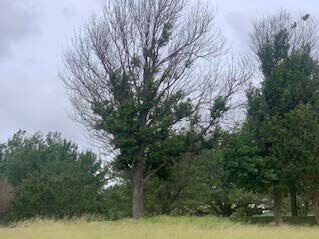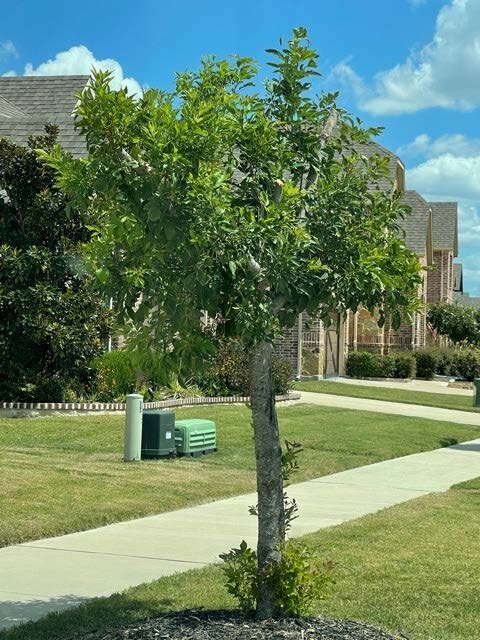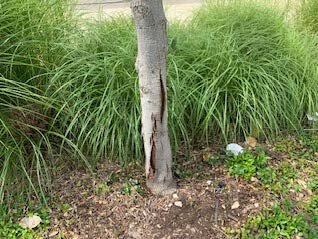GARDENING BY THE MOON
By: Dr. Robert E. Moon Harvest Horticulturist
The February freeze event was devastating to trees. The extended cold weather severely damaged the vascular system of the trees and froze the buds on branches causing trees to die. The freezing temperatures caused the water in the cells to freeze and expand destroying buds and vascular systems.
Many trees died quickly after the freeze but others are hanging on due to the wet, cooler spring and early summer. These trees that have not yet died may have vertical freeze cracks on the trunks and large branches. Many of these trees also have all major canopy limbs dead. If the tree only has cracks on the trunk, it can go either way. The splits may heal or the tree will die slowly from the damaged vascular system. Many of you are just now experiencing tree death due to the stress from hot summer temperatures.
Some trees have all dead canopy branches but are leafing out on the trunks. These trees are leafing out on the weakest tree buds. Trees have four levels of buds. Trees normally bud on primary buds and these are the strongest buds. The tree has three sets of backup buds, secondary, tertiary and latent or adventitious buds. These buds become weaker as the tree progresses to leaf out on the backup buds. This freeze was so severe, many of you are seeing the tree leaf out on the adventitious buds. These buds are what we call sucker growth. If your tree has died throughout the canopy but you are seeing this leafing out from the trunk only, this tree needs to be removed. It will never be a healthy tree because the trunk tissue will rot where all major canopy limbs were removed. These adventitious buds have no connection to the apical meristem of the tree. The sucker growth will always be weak and a continual problem for you.
October and November is an excellent time to replant dead trees. This gives the tree the winter to root so they can adapt before going through the heat of the summer.



